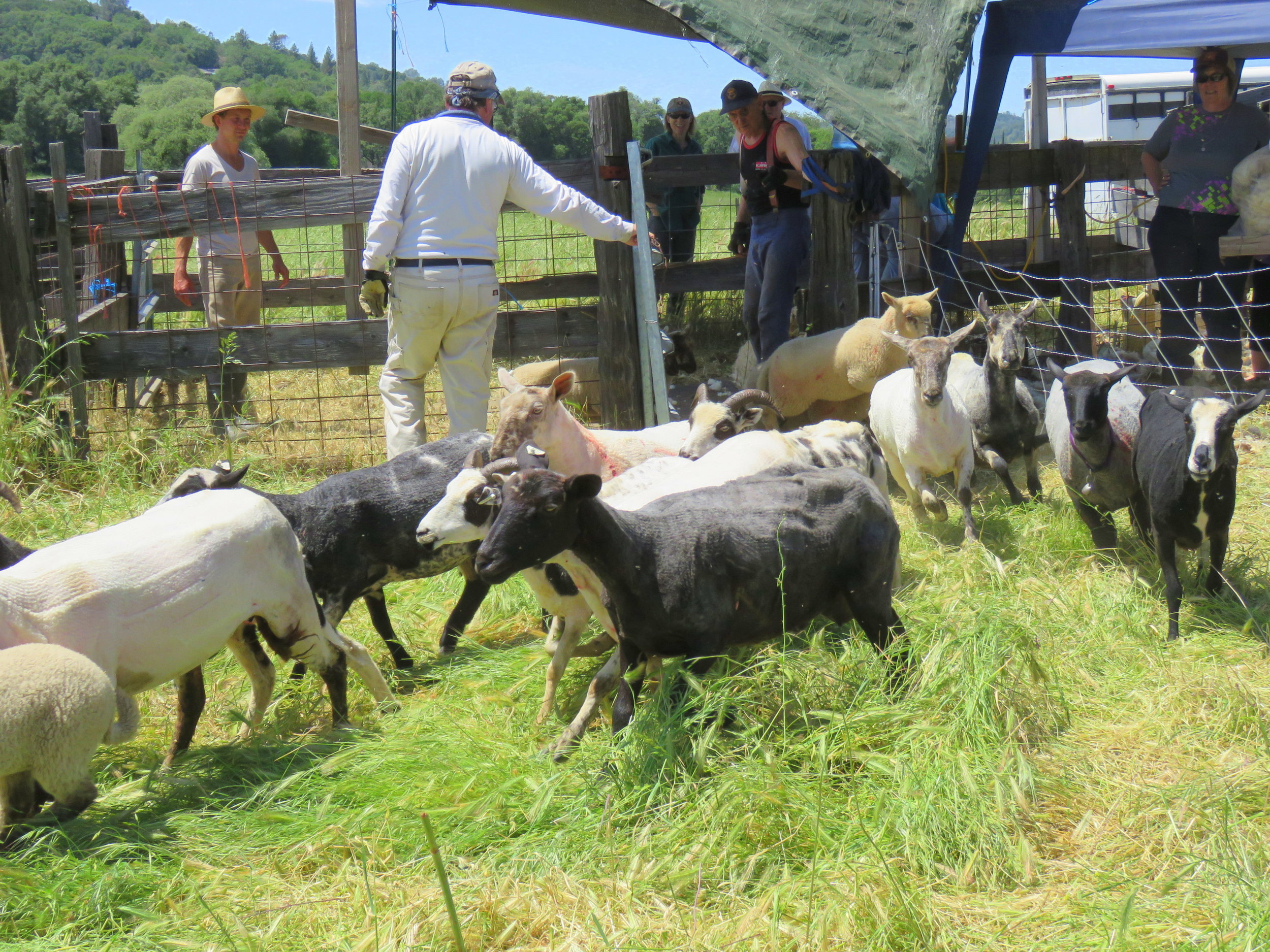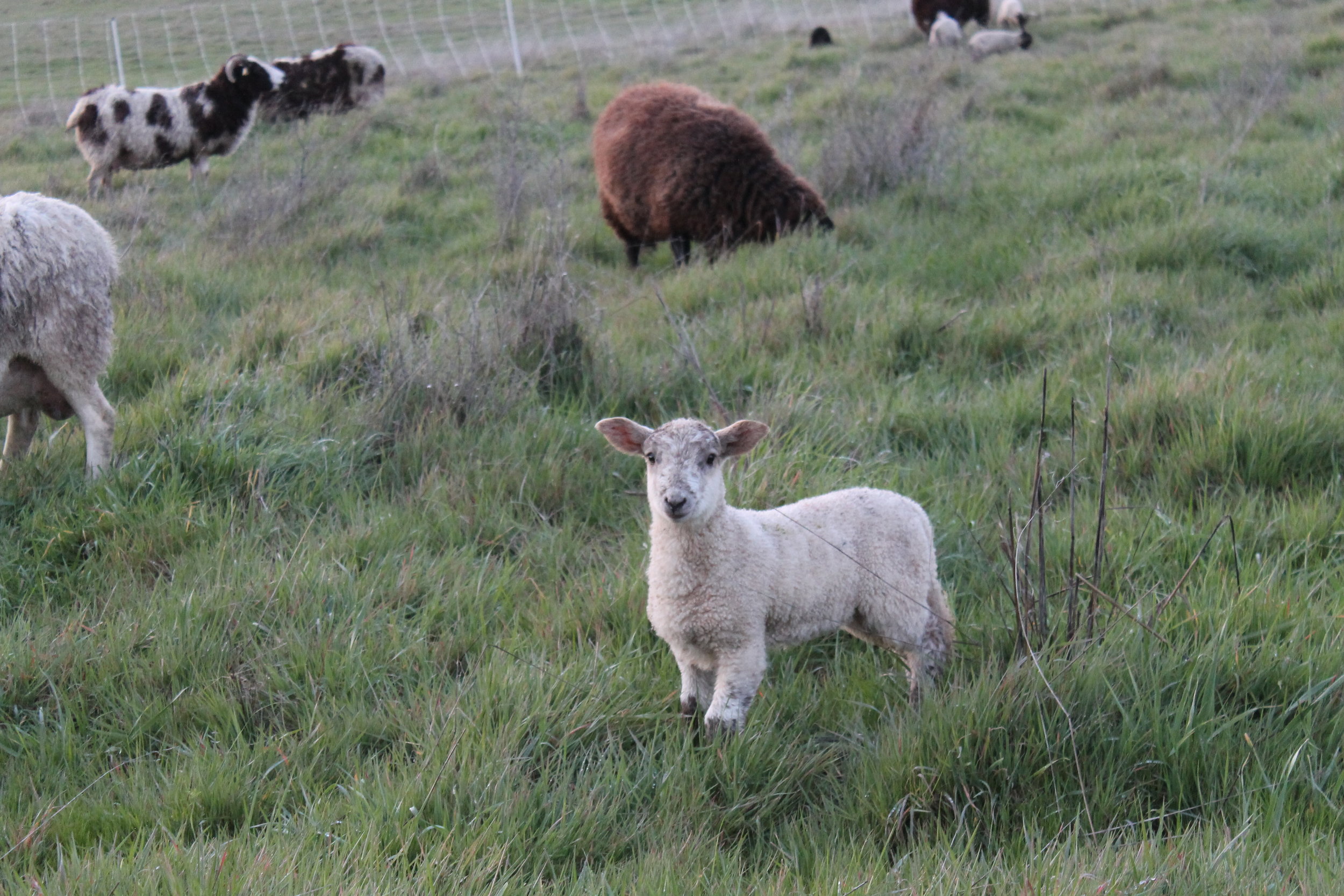We have had several people recently ask us why we are not trying harder to stay here and continue farming in this location. Here's the lowdown.
When we first put in a proposal to move here, the director of the American River Conservancy (the non-profit we lease from) had to fight the board in order to get our first two-year lease agreed upon. It took 6 months, and the director threatening to quit, for the board to agree to giving us a 2 year lease. After the first year of our lease, it took the second year to get the board to agree to a longer lease, although the president of the board at the time (now retired from the position) was quite supportive and seemed to appreciate what we were doing here. We had asked for a 10 year lease, and we got a 7 year lease, although a minority of the board had voted against even that. That is how we ended up with a combined 9 years of leasing here, ending April, 2024.
OK, fast forward to early 2021, when ARC's current director (not the one who helped us get a lease here, he retired in 2019), was organizing a 5 year plan for the property. ARC formed a committee whose job was specifically to make decisions about the property—the “Wakamatsu committee”. At the time we and the other tenant farmers on site had asked to be part of the planning process. Initially the director had agreed, but later the Wakamatsu committee and the director decided the tenant farmers should not participate beyond one meeting with them, where the committee members asked us what our goals were for our businesses and the property.
At this meeting, the Wakamatsu committee, comprised of three men from the ARC board (one of whom is the current president of the board), seemed very interested in our goals and ideas. We told them that we hoped to have a much longer term lease so that we could invest more of our own money into the site. We said that to stay long term we would need to add on to and repair our 950 sq. ft. house, we also needed to add additional irrigation on our leased pastures, and that we hoped to lease more land in the area. They nodded along encouragingly, agreed that these sounded like good ideas and "made sense", and then said they would send an email follow up. That they never sent an email follow up should have been a warning sign, but we figured they were busy and had forgotten.
We had hoped to have clarification at that meeting about whether they were open to our goals to expand the house and renew our lease with a longer term, and from their positive response during the meeting, we believed that ARC was open to those ideas.
Fast-forward to July of 2022, when we sent an email to the director asking in writing if ARC would be open to a longer term lease (20+ years) so that we could invest in repairing and adding on to the house we lease, along with some investments in the farm infrastructure. Five months after receiving the email, the director organized a short meeting to reply to our questions, and at the meeting she told us the board had decided they wanted us to leave after our current lease was up. There was no reason given, and she said we could tell our customers we had "outgrown the property"--which is, frankly, a lie. We were stunned and agreed to leave when our lease was up, since it seemed to have been decided.
A few weeks after that meeting, our house began leaking from the heavy rain, an issue we had brought up to ARC before and hoped to have fixed the previous summer. Mold began growing on the walls in the bedrooms and livingroom. When we told the director, she organized an inspection with a contractor (who also happened to be the wife of the ARC board president) and the Wakamatsu committee. They came and looked at the mold in the house, and talked with us. We asked why they didn't want to renew our lease when we had offered to put our own money into fixing up and adding on to the house, and they all stood there looking dumbfounded, before the director mumbled that it was "personal" and she "might never be in the mental space where [she] could talk about it". The leaking areas were fixed by a contractor in late March, without any mold remediation.
We have a couple customers who are also board members, and they have both been very supportive of us. After asking us about the details of what was happening on our end, one of them decided to let us know what had happened on the ARC’s end.
Our supporter let us know that the board had never been told we wanted to invest our own money into the house and property. They only took the vote to have us leave after we had met with the director and been told that the board had decided we needed to leave, not before. She had lied boldfaced to us to make the vote easier (since we had already "agreed" to leave).
It turns out the "Wakamatsu committee" members are all part of the group that did not want us to be here when we first put in our proposal to lease 9 years ago. They also voted against our 7 year lease. One of them is now the president of the board (his wife was the contractor who "inspected" our house). They want to use our house as a potential office space for ARC, and they think we are an eyesore and liability for the property (cattle, manure, electric fences, etc.). One committee member in particular especially hates us and thinks our solar system looks chintzy. These are the same people who told us our goals and ideas "made sense" at the meeting in 2021 and seemed to express interest in our being on site.
In conclusion, about 5 months after the inspection during which the Wakamatsu committee and the director failed to give any reason why they wanted us to leave, we received an emailed letter from them explaining the "reasons" our lease was not going to be renewed. It was very obvious that they had come up with excuses rather than an honest telling of what had happened. They made three main claims:
1) We got horses without asking (we had asked about the first one horse, received a verbal "yes" from the director, but had not asked about the three horses we got the next year). ARC had never let us know this was a deal breaker.
2) We yelled at a volunteer (true--after politely asking him to move his car so we could pull out from the barn with a trailer loaded full of cows, the stranger had responded grumpily and moved it into a worse position, and Spencer had yelled at him over the top of our truck, "NOT THERE!!"). ARC had never emailed to let us know this was a deal breaker either. In fact we had emailed them about it that day, to ask them to please be more careful about where they told people to park, which they replied was our problem, not theirs.
3) We had put in the solar system on the barn without asking for permission (we did in fact ask, in 2021 via email, and the director had met with us in person and given us a verbal yes, but never replied in writing to our email). ARC had decided to throw this in but didn't even verify its basis in reality.
ARC also told us we had to shut our solar system off, which we did. They had had a retired electrician (father of a board member who voted no on our lease) do a secret "inspection" of the solar, and say it was unsafe. They said everything had to be up to code and that it wasn't. At the same time, they have spent years putting off fixing up the house we live in, which is not up to code.
For the first few years that we lived in it, many of the windows did not work, there was no vent over the gas stove in our kitchen, the kitchen floor was falling apart (Spencer re-did it in 2018), and the chimney for the wood stove had never been inspected or cleaned (Spencer also had the wood stove and chimney replaced in 2018 at almost no cost to ARC). ARC claimed they had no budget for repairs to the rentals. It took months of prodding them to get them to agree to replacing some of the windows and putting in a vent over the stove in 2020. They had put off replacing the leaking siding until we had mold visibly growing in the house this year. To have them suddenly upset about the solar system on the barn, while our children have been living in a home that is not up to code, and they have been aware of it for years, is disturbing.
After receiving the excuses given in the letter and being told to shut down our solar system, we realized the people we were dealing with, and thus in part the organization they run, are dishonest and completely untrustworthy. We are actually very embarrassed that we believed them when they expressed interest in our goals in 2021. We are embarrassed that we have put up with living in a dilapidated home that has potentially damaged our respiratory health via mold exposure for the past several rainy seasons, believing they would let us fix it up after getting a longer term lease.
We love this land, we even love some things about the little house we live in, and we especially love the community here, our neighbors, friends and customers. We want you to know we have fought to be here. But, we've reached a point where it no longer makes sense to fight, and it will actually be a huge relief to no longer have to deal with our current landlord.
I hope this explains why we are not trying harder to stay, for those in the community who were, understandably, wondering. We have loved being here, and being part of this community, and we look forward to the next part of our journey as a family.
Spencer and Melissa Tregilgas



















